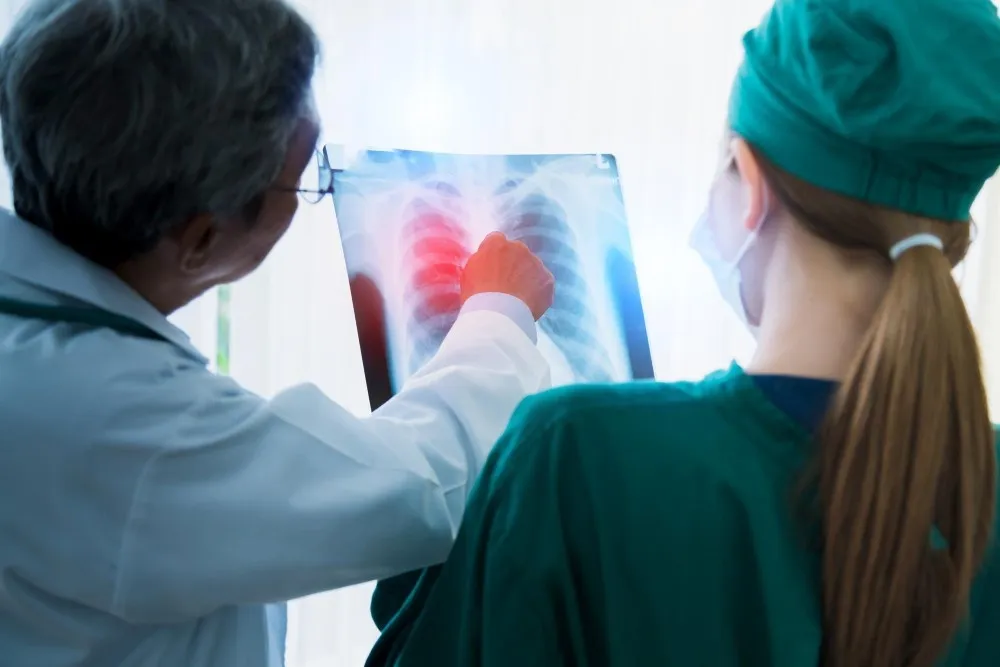What is thoracoscopy?
Thoracoscopy is a procedure that allows internal examination, biopsy and surgical removal of the disease of the affected parts within the lungs, the area between the lungs (mediastinum) and the lining of the chest cavity and the membrane covering the lungs (pleura). The thoracoscopy procedure involves insertion of thin, flexible tube in the chest through small incisions. This tube is equipped with a small fibre optic camera that allows the doctors to carry out the visual examination for the indications of pleural mesothelioma or other diseases.
At times, the visual indications of the disease do not confirm the diagnosis of the disease. To confirm the diagnosis, doctors can also carry out a biopsy during the procedure and perform the surgery for the resection of the affected masses if required.
What are different types of thoracoscopy?
There two kinds of thoracoscopy procedures commonly performed:
- Surgical Thoracoscopy: This procedure requires the patient to be under general anaesthesia and is recommended when the thoracoscopic surgery has a dual purpose of diagnosis and treatment.
- Medical Thoracoscopy: This procedure is far less invasive as compared to the surgical thoracoscopy, with only small incisions required to carry out the process. The only purpose of this procedure is to conduct the biopsy of the lungs, chest cavity or pleural cavity.
What is VATS?
VATS or Video-assisted thoracoscopic surgery is the medical procedure that enables the surgeons to get an internal view of the chest activity. This procedure is minimally invasive, as the doctors can diagnose and treat the affected areas by simply inserting thin tubes with fibre optic cameras into small incisions made on the chest.
What are the indications of thoracoscopy?
The indications for medical thoracoscopy treatment are:
- Pleurodesis
- Staging for mesothelioma
- Staging for lung cancer
- Site directed biopsy of parietal pleura
- Diagnosis of idiopathic pleural effusions
The major indications for VATS include:
- Pleural biopsy
- Pneumonectomy or lobectomy
- Adenopathy of evaluation of medistinal tumours
- Stapled lung biopsy
- Pleurodesis of malignant effusions
- Resection of peripheral pulmonary nodule
What is the duration of the procedure?
A thoracoscopic surgery does not take very long, with the procedure generally being completed between 45 and 90 minutes.
What type of anaesthesia is given for the procedure?
General or local anaesthesia is administered to the patient depending on the nature of the procedure. Local anaesthesia is used if the procedure involves only thoracoscopic lung biopsy and general anaesthesia is administered when the procedure also includes surgical treatment. Doctors may also administer additional dosages if required.
What is the cost of the procedure?
The cost of medical thoracoscopy treatment varies from Rs. 30000 to Rs. 50000 depending on the nature of the procedure and hospital settings.
How should I prepare for the procedure?
Some of the steps to be taken while preparing for a thoracoscopic surgery are:
- Exercise regularly on the days prior to the surgery in order to keep the body in the best possible shape
- Stop taking insulin, anti-inflammatory medication and aspirin products at least 1 week before the procedure
- Do not smoke for at least 1 month before the surgery
- Do not eat or drink anything for at least 8 hours before thoracoscopy
What are the associated risks of the procedure?
The risks associated with a thoracoscopic procedure include:
- Excessive bleeding
- Risks associated with the general anaesthesia that is used in the procedure
- Infection
- Pneumothorax, a condition which involves leakage of air from the lungs to the pleural cavity, often leading to a collapse of the lungs
- Perforation of the diaphragm
How is the procedure performed?
- The anaesthesiologist puts you under the suitable anaesthesia to put you to sleep. Once asleep, you are positioned on the side
- Several small incisions are made on the side of the chest
- A thin flexible tube fitted with a small camera is inserted from one of the incisions
- Once the doctors have completed the examination, the required surgical equipment is inserted through other incisions
- Once the procedure is completed, thin tubes are placed in the chest to drain out the residual fluid and air.
- The incisions are closed by stitches or staples
Can I go back home on the same day?
Patients are generally kept under observation in the hospital for 2-3 days after the procedure to make sure there are no complications.
What are the possible abnormal findings detected during the procedure?
While a thoracoscopic lung biopsy is generally carried out to identify the signs for pleural mesothelioma, other types of chest cancer can also be detected in the process. Thoracoscopy can also be used to diagnose chest diseases which other procedures have failed to identify.
What are the precautions to be taken after the procedure?
- The chest tubes inserted into the incisions must be kept in place for several days
- The patient should strictly follow the medication course prescribed by the doctor
- Perform breathing and coughing exercises to prevent pneumonia
- Notify the doctor immediately in case of excessive bleeding or chest pain

Reviewed by







